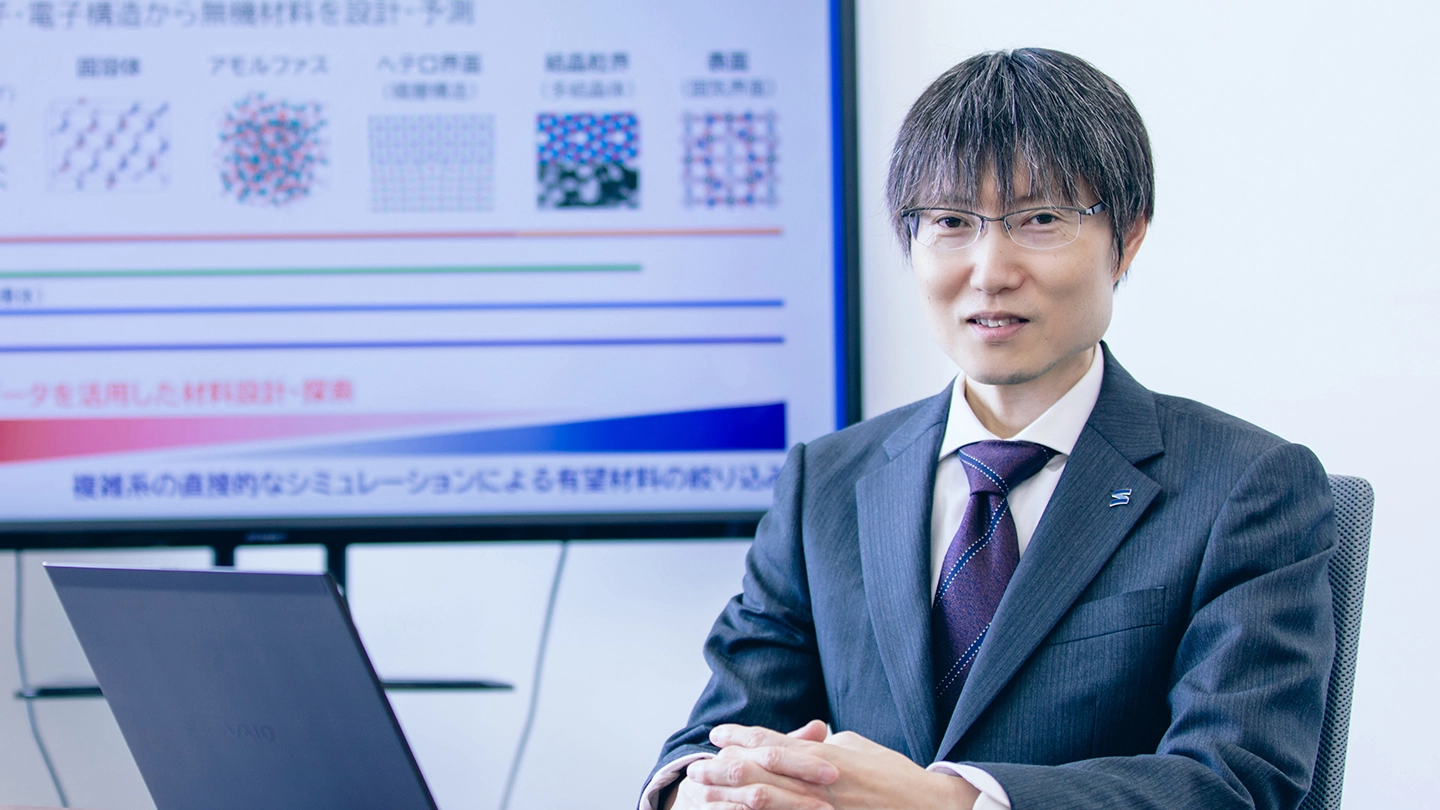
Much of modern life is supported by advanced materials that power everything from smartphones to electric vehicles. As innovative products emerge in various fields, and demand for high-performance materials increases, there is an urgency for more sustainable solutions-new materials that do not depend on rare elements. This has driven advancements in streamlining new material discovery through computational and data science methods.
Professor Fumiyasu Oba from the Materials and Structures Laboratory, Institute of Integrated Research, exemplifies this streamlined approach, having spent over 25 years using computational science methods to study inorganic materials[1]. In 2016, Oba used computer simulations to predict a previously unknown inorganic compound, then collaborated with experimentalists to successfully demonstrate its existence. This compound is a new semiconductor that can be used in electronic devices, optoelectronics, and solar cells. Containing no rare elements, it demonstrates the reliability and practical value of computational science and has attracted significant attention. Since this breakthrough, Oba has continued developing various new materials through computational and data science methods.
Discovery of a new nitride semiconductor without the use of rare elements for electronic and optoelectronic devices
"The mission and goal of the Materials and Structures Laboratory, where I work, is to create innovative materials that revolutionize conventional concepts," explains Oba. "In particular, my research group utilizes computational and data science methods to accurately predict the properties and functions of materials, accelerating the search for new materials and thereby realizing innovative materials."
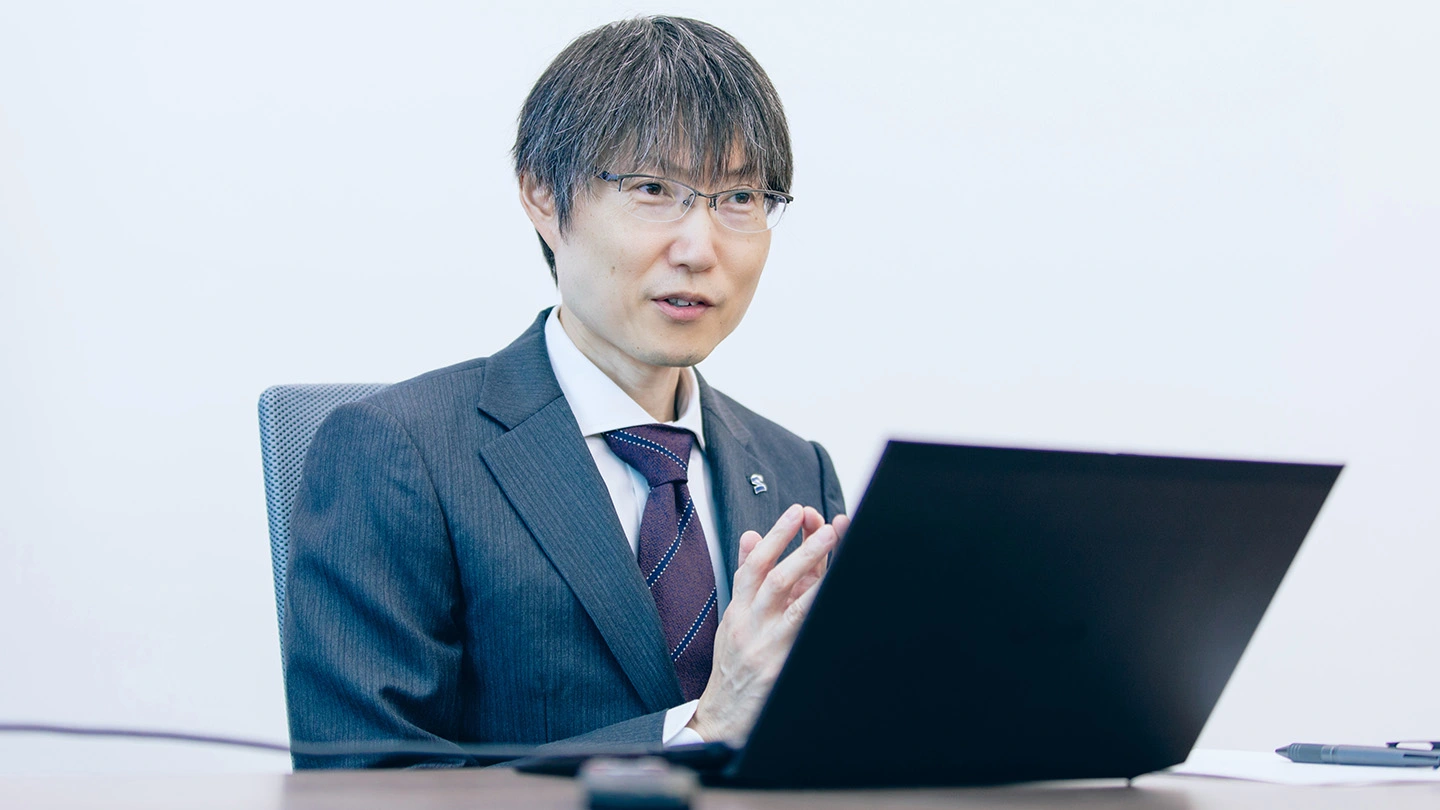
In new materials development, Oba possesses expertise in computer simulations using first-principles calculations. First-principles calculations are computational methods based on quantum mechanics. The properties and functions of materials are fundamentally determined by their electronic states. First-principles calculations enable highly accurate predictions for the electronic states of materials, as well as the structure and stability of crystals. This makes these calculations an indispensable tool in modern materials research and development.
Oba has been working on improving and enhancing first-principles calculations to achieve highly accurate predictions of the properties and functions of inorganic materials from an early stage. He is one of the researchers who has used these computational methods to pioneer simulations of inorganic materials used in electronic and optoelectronic devices, solar cells, photocatalysts, and other devices.
Then, in 2016, Oba and his colleagues succeeded in using first-principles calculations to discover an entirely new nitride semiconductor. This new nitride semiconductor is a compound called CaZn2N2, meaning that it is composed of calcium, zinc, and nitrogen. Made only from common elements, CaZn2N2 has attracted considerable attention as a promising material for new semiconductor devices and solar cells, with the potential to replace existing compound semiconductors containing rare metals such as indium and gallium.
Oba explains the process leading to the discovery of CaZn2N2 as follows. "We used first-principles calculations to predict with high accuracy the crystal stability and properties of approximately 1,000 hypothetical candidate materials created on a supercomputer. From among the candidates, we identified CaZn2N2 as the most promising new material. Then, Associate Professor Hidenori Hiramatsu (currently professor) and Professor Hideo Hosono (currently honorary professor), and their colleagues at the Materials and Structures Laboratory succeeded in actually synthesizing and measuring the properties of this previously unknown material predicted by computer simulation. The measurement results were surprisingly consistent with the properties predicted by the simulation. This demonstrated the high predictive accuracy of the simulation."
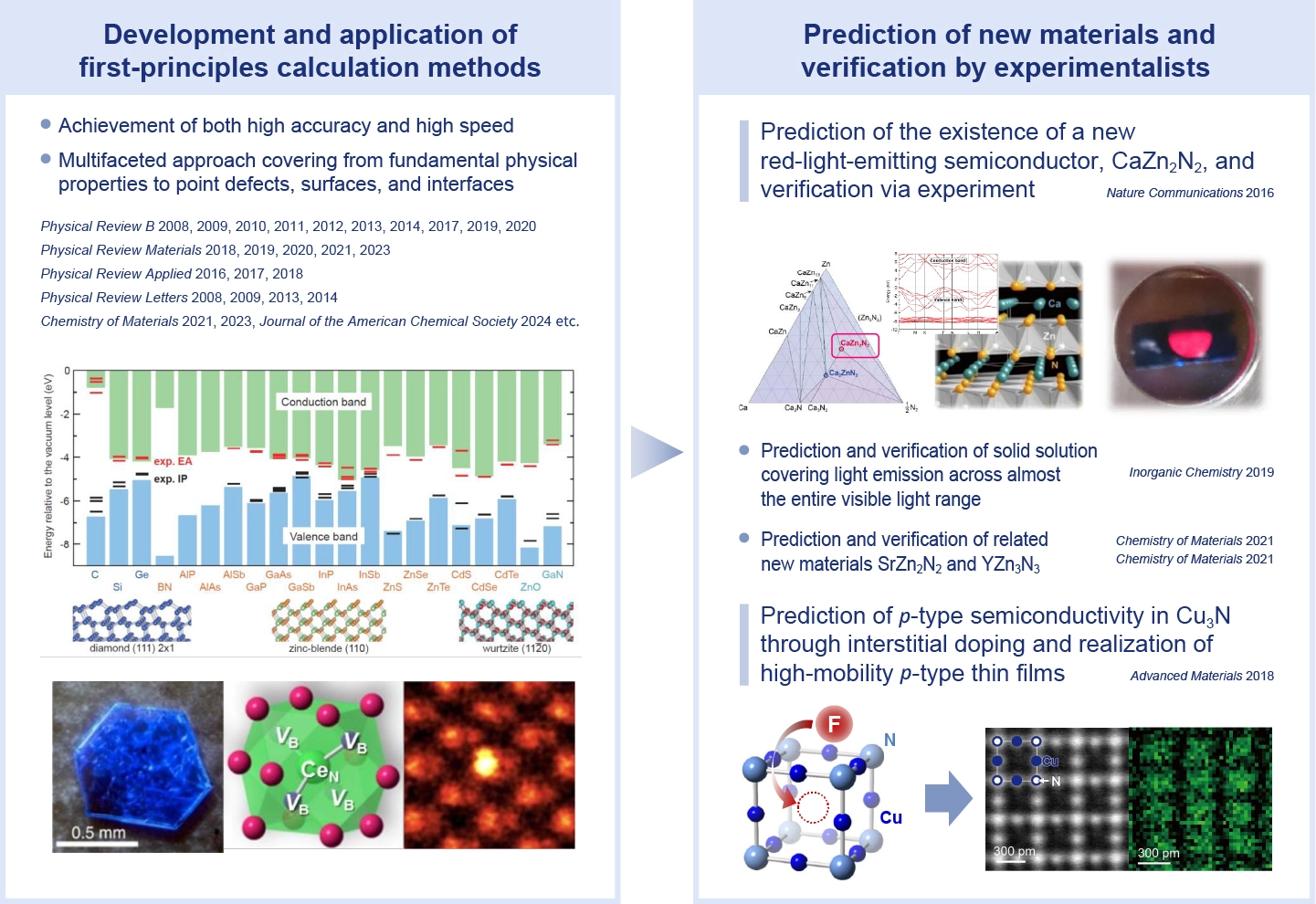
Since then, by fully utilizing computer simulations and collaborating with experimentalists in industry and academia, researchers led by Oba have successfully developed a variety of new materials. In recognition of his outstanding achievements over many years, Oba has received numerous awards, including the Japan Institute of Metals and Materials Meritorious Award in 2017, the Inoue Prize for Science in 2019, and the CerSJ Award for academic achievements in ceramic science and technology in 2022. Furthermore, in 2025, he received the Commendation for Science and Technology by the Minister of Education, Culture, Sports, Science and Technology, Awards for Science and Technology (Research Category) for his research using computational science to develop inorganic electronic materials.
Development of cutting-edge materials exploration methods based on first-principles calculations and machine learning
However, first-principles calculations have the drawback of requiring enormous amounts of time for numerical calculations. "Over the past 20 years or so, the development of new calculation methods and significant improvements in the performance of supercomputers have made it possible to quickly perform accurate numerical calculations for relatively simple and fundamental properties of inorganic materials," says Oba. "However, further improvements are still needed. Therefore, for about the past 10 years, I have been working on a fusion of data science and computational materials science known as materials informatics (MI)."
MI involves the use of data science techniques such as machine learning to analyze the results of experiments and theoretical calculations. MI is expected to lead to the discovery of material trends and entirely new materials that would not be possible through experiments or theoretical calculations focusing on individual materials.
"A massive amount of reliable data is essential for improving the predictive accuracy of machine learning models," explains Oba. "Therefore, in order to effectively use our unique first-principles calculation data for machine learning, I am currently working to significantly increase calculation speed and achieve even higher accuracy. I am also collaborating with Assistant Professor Akira Takahashi and other researchers in the field of MI, both in my research group and elsewhere, to build various machine learning models."
In 2024, they developed a machine learning predictive model using simulation data for approximately 3,000 surfaces of inorganic materials generated using cutting-edge first-principles calculation methods. This model enables the prediction of the electronic states of material surfaces, which is important for designing electronic and optoelectronic devices and photocatalysts.
"The surfaces of inorganic materials have diverse structures and are prone to adsorbing unintended impurities," notes Oba. "Consequently, it is difficult to accurately measure the properties of ideal surfaces through experiments. Furthermore, it takes an enormous amount of time to make highly accurate predictions using first-principles calculations alone. By using a predictive model built using machine learning trained on computational data, we were able to predict the surface properties of inorganic materials quickly and accurately. This predictive model is versatile enough to predict the surfaces of a wide variety of materials. I hope to use this model to discover new materials with the desired surface functions across a wide range of materials."
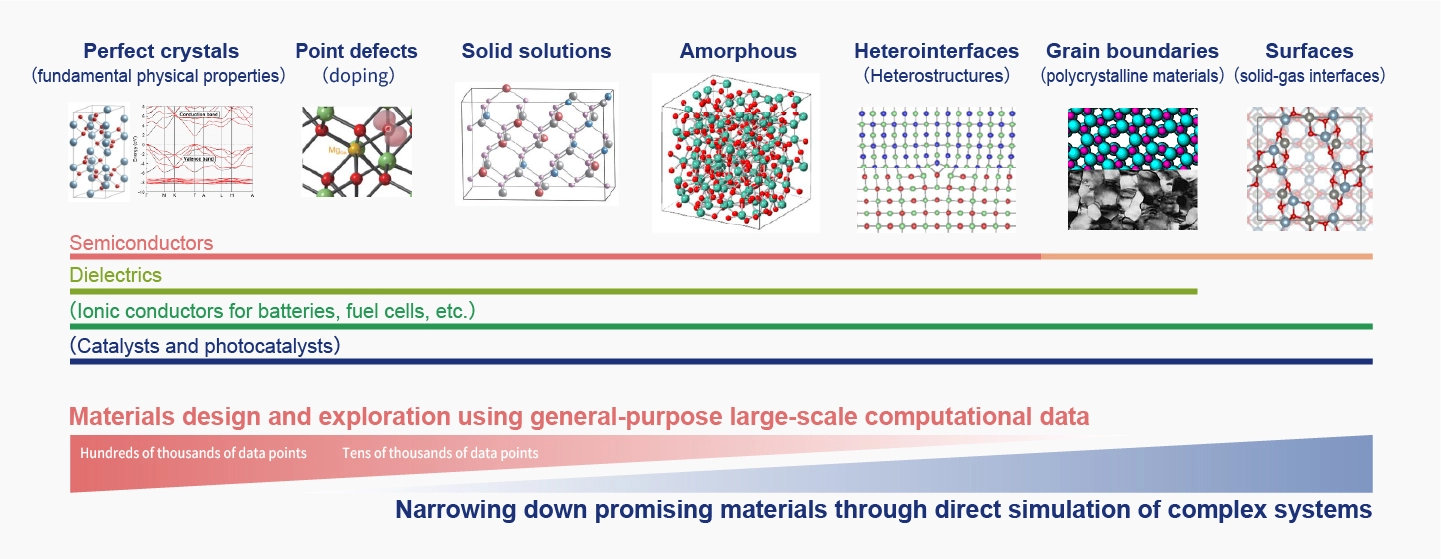
Exploring new materials for resolving social issues
As the shift from gasoline-powered vehicles to hybrid vehicles (HVs) and electric vehicles (EVs) progresses, the role of power devices that control the high voltages and large currents in HV and EV motors and charging systems is becoming increasingly important. Currently, silicon is the primary semiconductor used for power devices. However, the narrow bandgap[2] of silicon makes it an imperfect material for high-voltage power devices. For this reason, semiconductors with a wide bandgap (wide-bandgap semiconductors) are attracting attention. In addition to silicon carbide, which is gaining traction in practical use as a high-voltage power semiconductor, there is also active research into gallium nitride and gallium oxide.
"Among wide-bandgap semiconductors, oxides are extremely attractive materials," explains Oba. "This is because oxides are compounds of oxygen, which is abundant on our planet, and can often be synthesized at low cost. However, gallium oxide, which is currently receiving considerable attention, is extremely difficult to transform into a p-type semiconductor[3], limiting its application to devices that use only n-type semiconductors[4]. To overcome this situation, we are taking on the challenge of developing previously unknown wide-bandgap semiconductors from completely new oxides and related compounds."
In addition to wide-bandgap semiconductors, Oba will accelerate the development of new inorganic materials that contribute to energy conservation and carbon neutrality by leveraging computational and data science expertise and working closely with experimentalists.
Importance of advancing research through both computational and experimental approaches
Oba's initial encounter with first-principles calculations dates back to his university days, about 25 years ago. "As a student at Kyoto University, I learned about research on inorganic materials using first-principles calculations in the research group of Professor Hirohiko Adachi (currently professor emeritus)," recalls Oba. "I was fascinated by the idea that first-principles calculations could be used to predict electronic states that determine the properties of materials. However, at that time, computers were not as advanced as they are today, and honestly, I was somewhat skeptical about the validity of the predictions made using first-principles calculations."
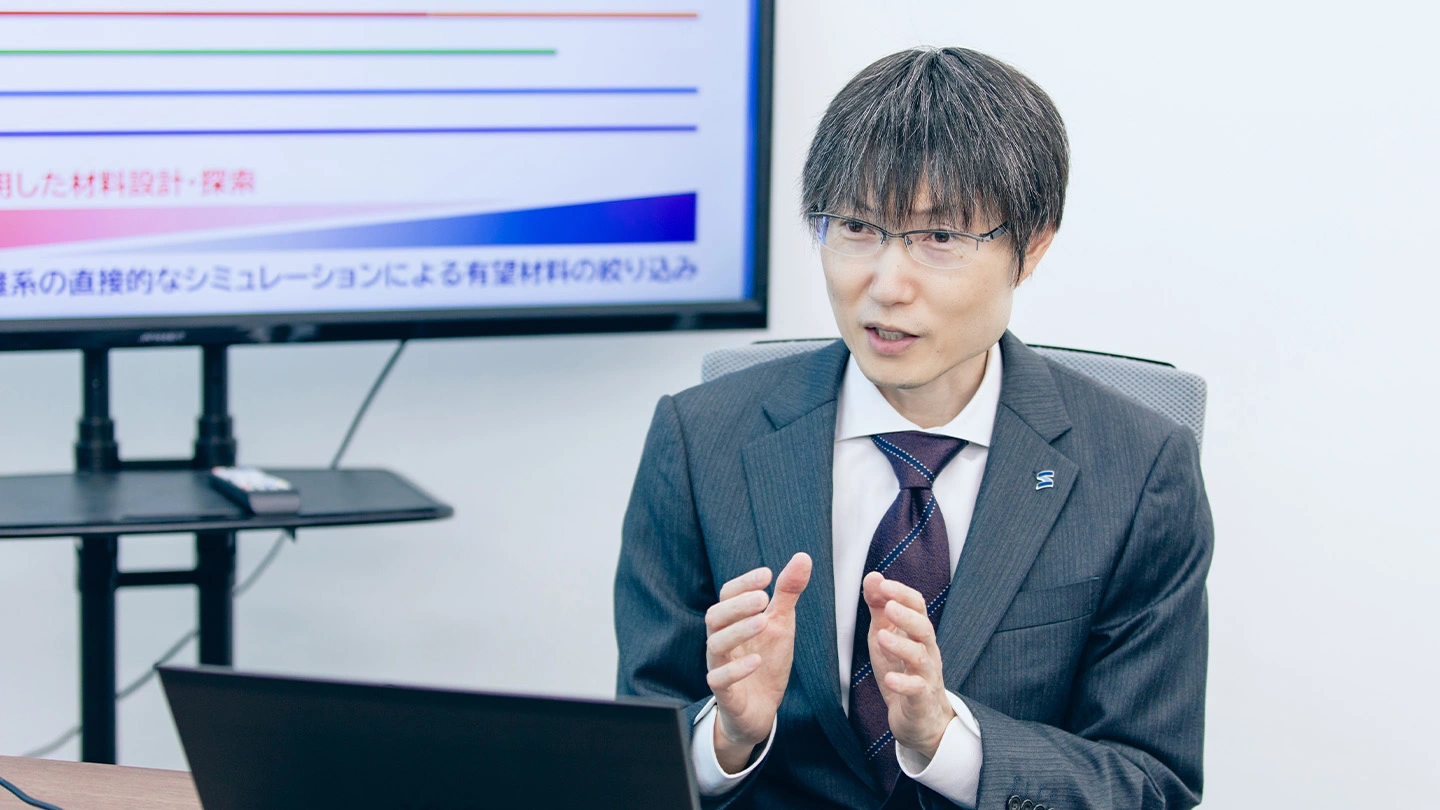
After completing an accelerated doctoral program in 2000, Oba, with an introduction from his academic advisors, Professor Adachi and Associate Professor Isao Tanaka (currently professor emeritus), joined the laboratory of Associate Professor Yuichi Ikuhara (currently university professor) at the University of Tokyo as a postdoctoral researcher, where Professor Ikuhara specializes in using electron microscopy to perform structural analysis of inorganic materials. Oba began conducting research using electron microscopy to perform structural analysis, aiming to confirm the results of first-principles calculations of inorganic material interfaces.
"This research increased my confidence in first-principles calculations," recalls Oba. "At the same time, I recognized the limitations of calculation-based predictions and learned the importance of conducting research that combines calculations and experiments. I believe that this experience is the reason that I now place importance on collaborative research with experimentalists. Moreover, even before assuming my position at the Tokyo Institute of Technology in 2015, I was greatly inspired by my participation in the Tokodai Institute for Element Strategy. This was an Element Strategy Initiative (run by the Ministry of Education, Culture, Sports, Science and Technology) that promoted world-class research on inorganic materials, with Professor Hideo Hosono serving as the director." "The Institute of Science Tokyo is home to many powerful experimental research institutes, centers, and laboratories, including the Materials and Structures Laboratory and the MDX Research Center for Element Strategy, and I will continue to work closely together in collaborative research with these organizations in an aim to create innovative materials," says Oba with great conviction. "At the same time, I want to broaden the scope of our research by further strengthening collaboration with research institutes and companies outside our university."
Finally, Oba gave the following message to students and young researchers about the appeal of his research. "I started performing computer simulations because I wanted to understand phenomena occurring inside inorganic materials theoretically," explains Oba. "Thanks to improvements in computer performance and advances in theory and computational methods, simulations often lead to new insights and discoveries. In this way, materials research never ceases to be fascinating. I believe that the true joy of materials research is being able to comprehend previously unknown phenomena, predict new materials that no one had ever thought of before, and then actually create those materials. Personally, I find a research position that allows me to pursue my interests to be an extremely fulfilling and attractive job. Innovative and challenging research that can transform the world will likely have more failures than successes. Even so, I encourage everyone to boldly take on new challenges without fear of failure."
Explanations of Technical Terms
- [1]
- Inorganic materials:In materials science, inorganic materials are compounds which do not (with some exceptions) contain carbon as a major component, and organic materials are primarily carbon-based compounds.
- [2]
- Bandgap:The range of energy that electrons cannot take, which is an essential physical quantity affecting the operating and breakdown voltages and light-emission properties of semiconductor devices
- [3]
- p-type semiconductor:A semiconductor in which holes left by the absence of electrons (electron holes) are responsible for conducting electricity
- [4]
- n-type semiconductor:A semiconductor in which freely moving electrons are responsible for conducting electricity






